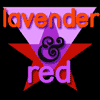Post-Stonewall gay liberation: ‘Power to the People!’
Lavender & red, part 72
By
Leslie Feinberg
Published Sep 12, 2006 10:42 PM
Stonewall is often recalled as a critical
turning point in the United States because it marked the qualitative development
of a mass movement in this country. That is both evident and
important.
The Stonewall Rebellion was certainly not the first time in
history that people who today would be referred to as gay, lesbian, bi and trans
fought back against police repression. Stonewall, however, was only defensive in
its very earliest hours. It quickly turned into an insurrectionary offensive.
The street leadership of youth of all sexes—particularly those who were
homeless and trying to cobble together a living on the streets, and those who
faced oppression based on their nationality and/or gender
expression—forced the police and riot troop reinforcements to retreat,
again and again, in running battles.
Stonewall was not just a response to
oppression. For at least the third time in history, revolutionary leadership
sparked a mass struggle for the liberation of same-sex love, oppressed genders
and sexes.
But unlike the early 20th century German Homosexual
Emancipation Movement and the early 1950s Mattachine movement, the left-wing of
gay liberation unleashed by the Stonewall insurrection was more thoroughly
multinational and included many more women and trans people. The revolutionary
leadership of early gay liberation was both of the oppressed and with the
oppressed.
Some 25 militant organizations coalesced across the country in
1969, including the Committee for Homosexual Freedom of San Francisco, which
fought job discrimination, and chapters of the Gay Liberation Front (GLF) in
cities that included New York, Berkeley, Los Angeles and Minneapolis.
Many
of these youth of all nationalities and sexes and genders identified as radicals
and revolutionaries. They drew inspiration from the Chinese Revolution, the
indefatigable resistance of the Vietnamese people and the liberation struggles
sweeping the African continent. Many of the youth of color were actively a part
of struggles for their own national liberation, and many of the white youth saw
the need to unite against racism and its white supremacist
ideology.
Within a week after the Stonewall Rebellion, the Gay Liberation
Front formed. It named itself to honor the National Liberation Fronts—the
national resistance movements—in Algeria and Vietnam and demanded, in
solidarity with the Black liberation movement, “Power to the
People!”
The Los Angeles GLF statement of purpose, adopted in
December 1969, read in part: “We are in total opposition to
America’s white racism, to poverty, hunger, the systematic destruction of
our patrimony; we oppose the rich getting richer, the poor getting poorer, and
are in total opposition to wars of aggression and imperialism, whoever pursues
them. We support the demands of Blacks, Chicanos, [Asians], Women, Youth, Senior
Citizens, and others demanding their full rights as human beings. We join in
their struggle, and shall actively seek coalition to pursue these
goals.”
GLF women initiated their own caucus in the spring of 1970;
some of these women later started the “Lavender Menace.” In November
1969 and May 1970, lesbians from the Lavender Menace demanded to be heard at the
Congress to Unite Women, opening up the vocal and militant role of lesbian
activism on the front lines of the women’s liberation movement.
East
Coast GLF delegates and other militants at the November 1969 Eastern Regional
Conference of Homophile Organizations—a more moderate coalition from the
pre-Stonewall era—formed a “radical caucus” that put forward
resolutions that included calls to support the Black Panther Party, which was
battling police raids, state frame-ups and assassinations; the Chicano grape
pickers, who were trying to organize a United Farm Workers union in the field
factories; and the Chicago Eight, political activists charged with conspiracy to
start a riot at the 1968 Democratic National Convention in Chicago; and to take
part in demonstrations against the Pentagon’s war in Vietnam.
From
San Francisco to Ann Arbor, anti-war lesbian and gay activists organized to stop
the war against Vietnam. New York’s GLF organized its own contingent at
the Oct. 15, 1969, anti-war march in Manhattan, and an even larger one at the
November moratorium weekend in Washington, D.C., in which half a million people
protested the Vietnam War. Gay radicals from Berkeley marched with their banners
at the November 1969 anti-war rally in San Francisco. And lesbians and gays
organized a large and visible presence at the 1971 May Day anti-war protest in
Washington.
People of color LGBT forces provided leadership in many of
these struggles, and formed their own caucuses and organizations. The struggle
against racism and national oppression was an integral, yet highly
under-reported, part of the multinational left-wing gay liberation
movement.
Next: Nationally oppressed leadership and left-wing gay
liberation.
Articles copyright 1995-2012 Workers World.
Verbatim copying and distribution of this entire article is permitted in any medium without royalty provided this notice is preserved.
Workers World, 55 W. 17 St., NY, NY 10011
Email:
ww@workers.org
Subscribe
wwnews-subscribe@workersworld.net
Support independent news
DONATE


